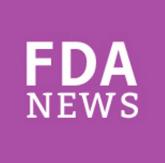News

For some time, the potent antiemetic ondansetron, a 5-HT3 receptor antagonist approved for preventing nausea and vomiting related to cancer chemotherapy and surgery, has been used to treat morning sickness, mostly for severe cases of nausea and vomiting in pregnancy (NVP). Ondansetron, which blocks the action of serotonin, is marketed as Zofran in the United States and Canada, and is also available in generic formulations.
Like most drugs, ondansetron is not labeled for use in pregnancy. But until recently, the limited reproductive safety data available on ondansetron have been somewhat reassuring. The first published report was a Motherisk study comparing pregnancy outcomes of three groups of women who called a teratogen information service. My colleagues and I found no increase in the major malformation rate among the 176 pregnancies of women exposed to ondansetron (a 3.6% rate of major malformations), compared with the rates among women exposed to other antiemetics and those exposed to drugs known not be teratogenic (BJOG 2004;111:940-3). However, this sample size could not rule out less than a threefold increase in malformation rates.
More reassuring data became available earlier this year with the publication of a study using data from Danish pregnancy, birth, and prescription registries. The study compared pregnancy outcomes among almost 2,000 women exposed to ondansetron in pregnancy, and women not exposed to the drug between 2004 and 2011. Exposure to ondansetron was not associated with an increased rate of major malformations (at about 3%), or other adverse fetal outcomes, including stillbirth, preterm delivery, and low birth weight, compared with the unexposed pregnancies (N. Engl. J. Med. 2013;368:814-23).
However, the mean gestational age of exposure was 10 weeks, so half the women who took ondansetron started treatment after that time, past the window of risk for malformations, which may have diluted the risk, if it existed. Still, this limitation did not deter from the strength of the conclusions of the study.
But new and troubling evidence suggesting that the drug may be associated with increased risks during pregnancy – both maternal and fetal – has recently become available in the medical literature and elsewhere.
In August 2013, at the International Society of Pharmacoepidemiology meeting in Montreal, the results of a different group of Danish researchers using data from the same national registries employed in the study published in February, but with more pregnancies (almost 900,000) over a longer period (1997 to 2010), detected a twofold increase in congenital heart defects associated with ondansetron during the first trimester of pregnancy. Of the 1,248 women who filled a prescription for ondansetron during the first trimester, 4.7% (58) had a baby with a congenital malformation, compared with 3.5% (31,357) of those who were not exposed to ondansetron; this represented a 30% increased risk (adjusted odds ratio, 1.3). The increased risk was mostly due to the increased prevalence of heart defects. There was no association with congenital malformations and first-trimester prescriptions for metoclopramide, another drug used to treat hyperemesis gravidarum.
In January 2012, a study from the Center for Birth Defects Research and Prevention identified a twofold increased risk for cleft palate associated with ondansetron exposure used for NVP in the first trimester. There were over 9,000 pregnant women in the study overall, both cases and controls; 67% reported NVP and 15% used some kind of agent to treat NVP. The study used data from the National Birth Defects Prevention Study, looking at the association between NVP and treatments for NVP and cleft palate, and other noncardiac birth detects (Birth Defects Res. A Clin. Mol. Teratol. 2012;94:22-30).
With these recent studies, we are left with contradictory results regarding the risk of birth defects associated with ondansetron exposure in the first trimester, and more studies may be needed.
Importantly, potential risks of ondansetron, namely, cardiac arrhythmias and serotonin syndrome – which can be harmful to both the mother and fetus – also should be considered. In June 2012, the Food and Drug Administration (FDA) issued an updated warning about the possible increased risk of prolongation of the QT interval, which can result in the potentially fatal arrhythmia Torsade de pointes, associated with ondansetron. The warning advised against using ondansetron in patients with congenital long-QT syndrome, and recommended ECG monitoring for certain patients on ondansetron, including those with electrolyte abnormalities, such as hypokalemia or hypomagnesemia.
Based on what we hear from women who have been treated with ondansetron during pregnancy and contact Motherisk, most clinicians are not following these recommendations in pregnant women. But monitoring pregnant women taking ondansetron for NVP for these adverse effects is just as important – particularly because they are prone to electrolyte imbalances, including hypokalemia and hypomagnesemia, specified in the FDA warning.


Major finding: For pregnancies exposed to ondansetron, the rate of major birth defects was 2.9% (vs. 2.9% without exposure), that of stillbirth...
